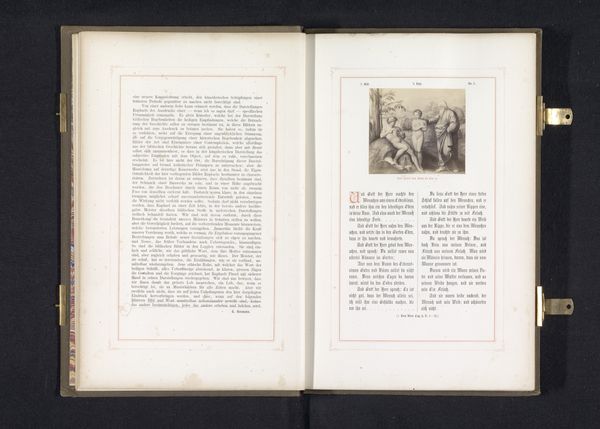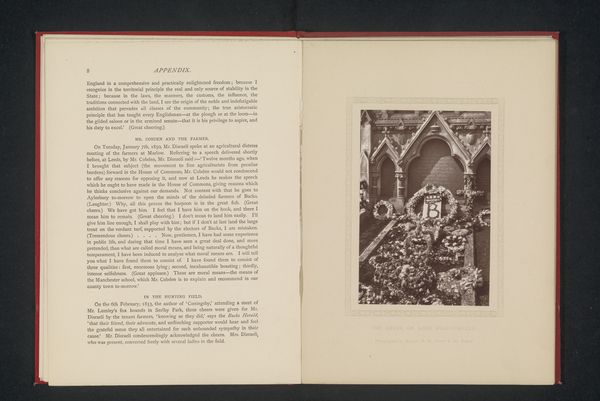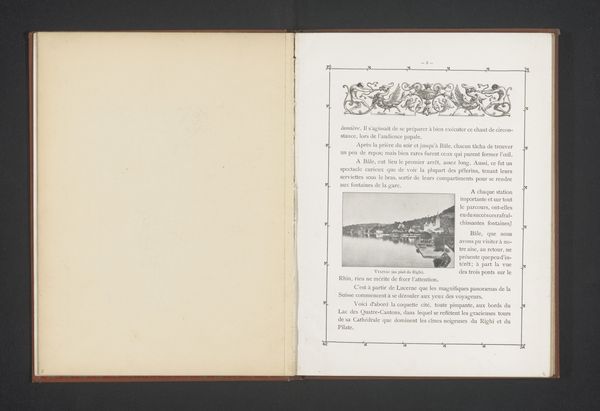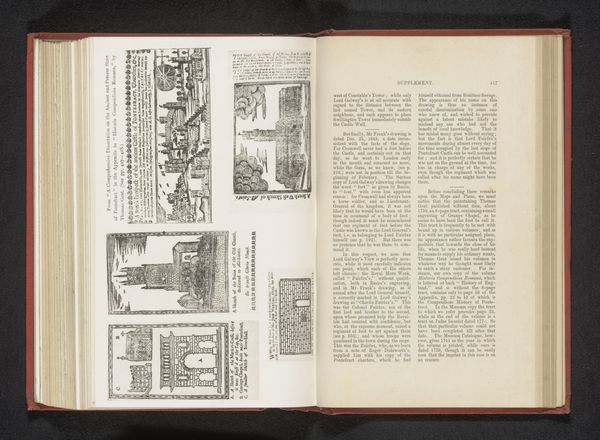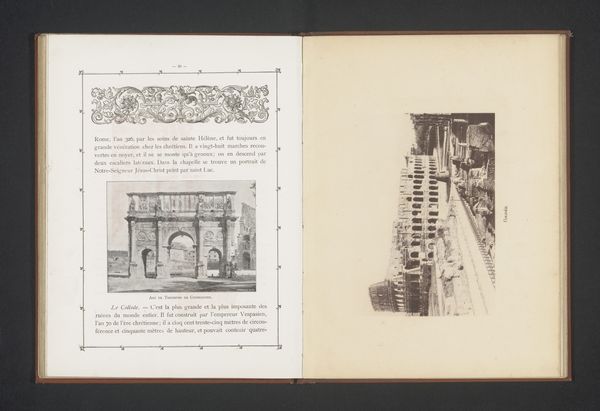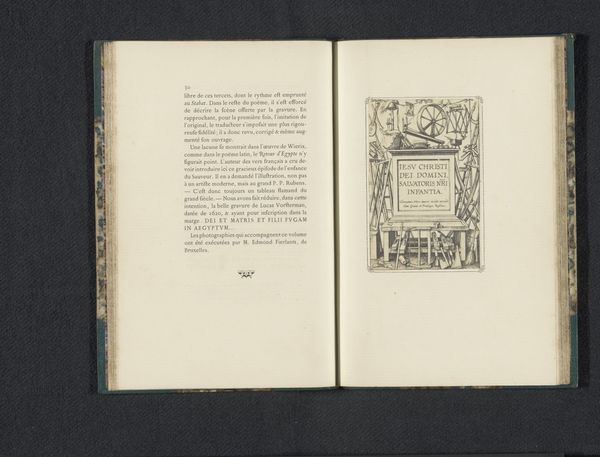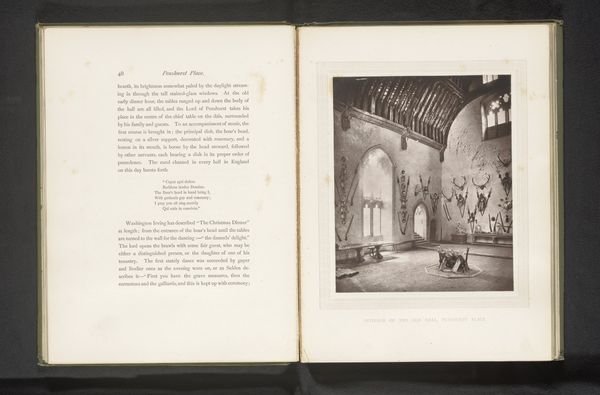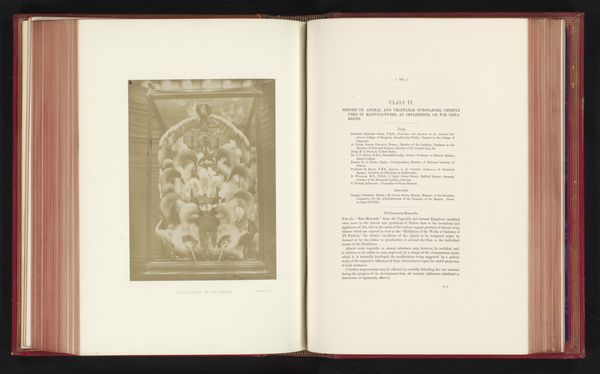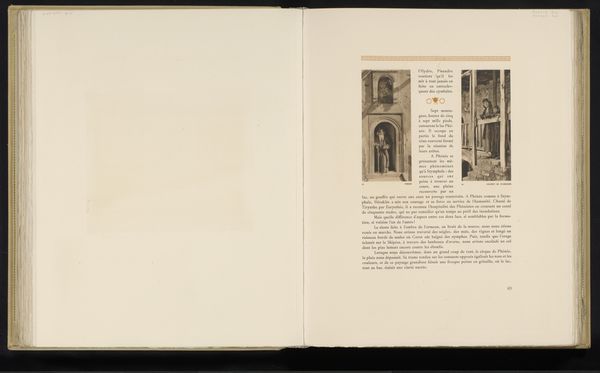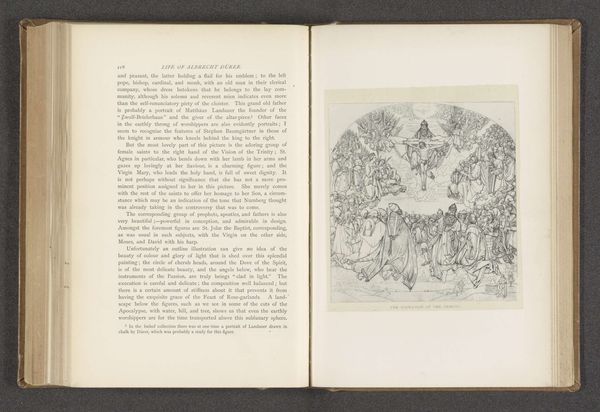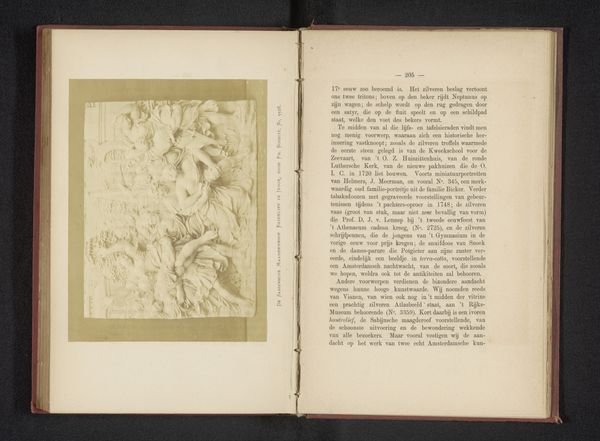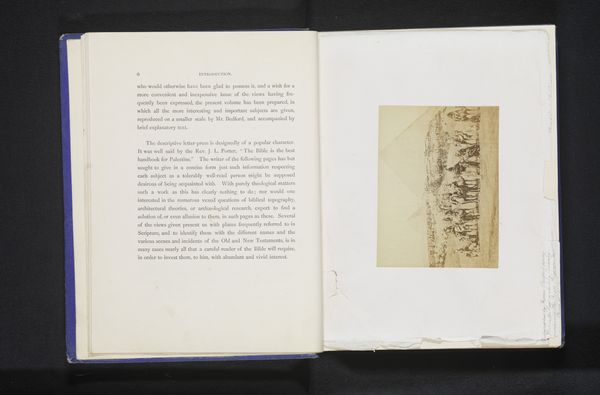
Reproductie van een schilderij, met daarop afgebeeld de laatste momenten van de martelaren before 1898
0:00
0:00
print, photography, engraving
# print
#
text
#
photography
#
history-painting
#
academic-art
#
classical type
#
thin font
#
engraving
Dimensions: height 72 mm, width 87 mm
Copyright: Rijks Museum: Open Domain
Editor: This photographic print from before 1898 reproduces a history painting, showing the final moments of some martyrs. It’s contained within the pages of a book, surrounded by text and decorative borders. There's a stark contrast between the image and the rather ornate text around it. What strikes me most is how the dramatic subject is presented almost as a removed historical document, neatly contained. How do you interpret this work, thinking about its historical and cultural contexts? Curator: The photograph, acting as a reproduction, highlights the democratization of imagery in the late 19th century. Suddenly, these grand history paintings, usually reserved for elite consumption in salons or state buildings, become accessible to a wider public through print. But what kind of public are we talking about here? Editor: Given the religious subject matter, and the presence of French text alongside the images, I would imagine a largely literate, Christian audience, perhaps Catholic given Rome’s prominent position in the depicted narratives? Curator: Exactly. The inclusion in a book points to education and moral instruction. Reproductions of martyr scenes in particular had a strong political function, solidifying religious identity. Consider how this image might function to reinforce community values during times of social upheaval. Were there particular challenges the Catholic Church was facing during this period in France? Editor: Well, this was a period of growing secularism and anti-clericalism in France, so religious imagery likely played a vital role in maintaining solidarity among the faithful. Curator: Precisely! The photograph itself becomes an active agent in a larger social discourse. It encourages a kind of "armchair pilgrimage" to significant religious sites in Rome through its accessible image, thus connecting the local readership to this imagined larger world. Editor: I see how the image, rather than just being an aesthetic object, performs cultural work within a specific social context. Curator: Indeed! Recognizing those contexts transforms the meaning of such an ordinary artifact.
Comments
No comments
Be the first to comment and join the conversation on the ultimate creative platform.
